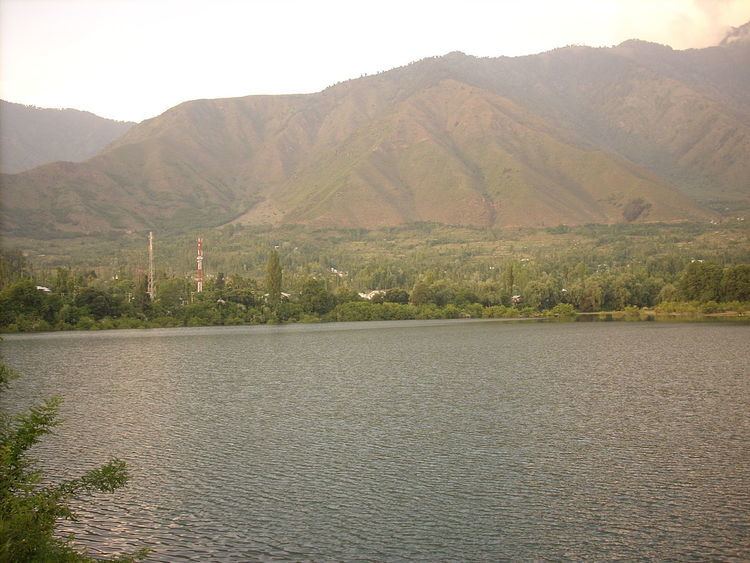Area 141 km² Phone 0194 246 2327 | Established 1981 | |
 | ||
Address Near Harwan Mughal Garden, Dachigam Road, Srinagar, Jammu and Kashmir 191202 Similar Dudhwa National Park, Manas National Park, Salim Ali National Park, Shalimar Bagh - Srinagar, Great Himalayan National | ||
Dachigam National Park is located 22 kilometers from Srinagar, Jammu and Kashmir. It covers an area of 141 km2. The name of the park literally stands for "ten villages" which could be in memory of the ten villages that were relocated for its formation.
Contents
The park has been a protected area since 1910, first under the care of the Maharaja of Jammu and Kashmir and later under the observation of the concerned government authorities. It was initially created to ensure clean drinking water supply for the city of Srinagar. It was finally upgraded and declared a National Park in the year 1981.
Topography
Dachigam National park is located in the Zabarwan Range of the western Himalayas. The variation in altitude is vast, ranging from 5500 ft to 14000 ft above mean sea level. Due to this vast variation, the park is very faulty n beekaar demarcated into an uneven region. The terrain ranges from gently sloping grasslands to sharp rocky outcrops and cliffs. Part of the park own kind of natural beauty with bare rock mountains and crevices.
Flora
The mountainsides below the tree line are heavily wooded. Most of this coniferous forest consists of broad leaf species. Interspersed between these are alpine pastures, meadows, waterfalls and scrub vegetation with deep gullies, locally known as Nars, running down the mountain face. Most of the grasslands and meadows, except in the harsh winters, are covered with brightly coloured flowers. Located high among its interiors is the Marsar lake from which flows the Dagwan river. This river flows all the way down to, and past, the lower region where it runs along the only proper road in the park and is also famous for its fish population, the trout.
Fauna
The main animal species that Dachigam is most famous for is the hangul, or the Kashmir stag. the other species are:
Birds
More information
Many precautions have been taken to protect the flora and fauna in Dachigam National Park. The Wildlife Institute of India and Jammu & Kashmir Wildlife Protection Department have a proposal about GPS tracking system to be implemented on Hangul for its protection.
Wildlife Department of Jammu and Kashmir which is entrusted with the protection of the Dachigam National Park has, over the years, shown a lackadaisical approach towards their duties resulting in the destruction of the Park. A lack of sense of responsibility on the part of the Department has reduced the area of the Park considerably. A sheep breeding farm located well within the Park is according to the experts, a great danger to the survival of the deer specie to which Dachigam is the last stronghold. The sheep farm which is spread over 100 acres (2000 kanals) was the prime breeding spot of the Hangul. The Sheep Husbandry Department is sitting over a cabinet decision which had asked the authorities to vacate the park.
The Mulnar side of the National Park has also seen some hectic human activity lately resulting in the spread of human settlements close to the Park. The locals have encroached upon the Park and seized some of its part for a graveyard as well.
On the southern flank of the park, the cement factories and stones quarries at Khrew are another great danger to the survival of the Hangul specie. Over the years, the unchecked mushroom growth of cement factories and stone quarries has squeezed the animal to a limited space within the park.
Wildlife activists and conservationists believe that if the corrective measures are not taken immediately, the Hangul which is also the Sate animal would be completely wiped out of the Park.
